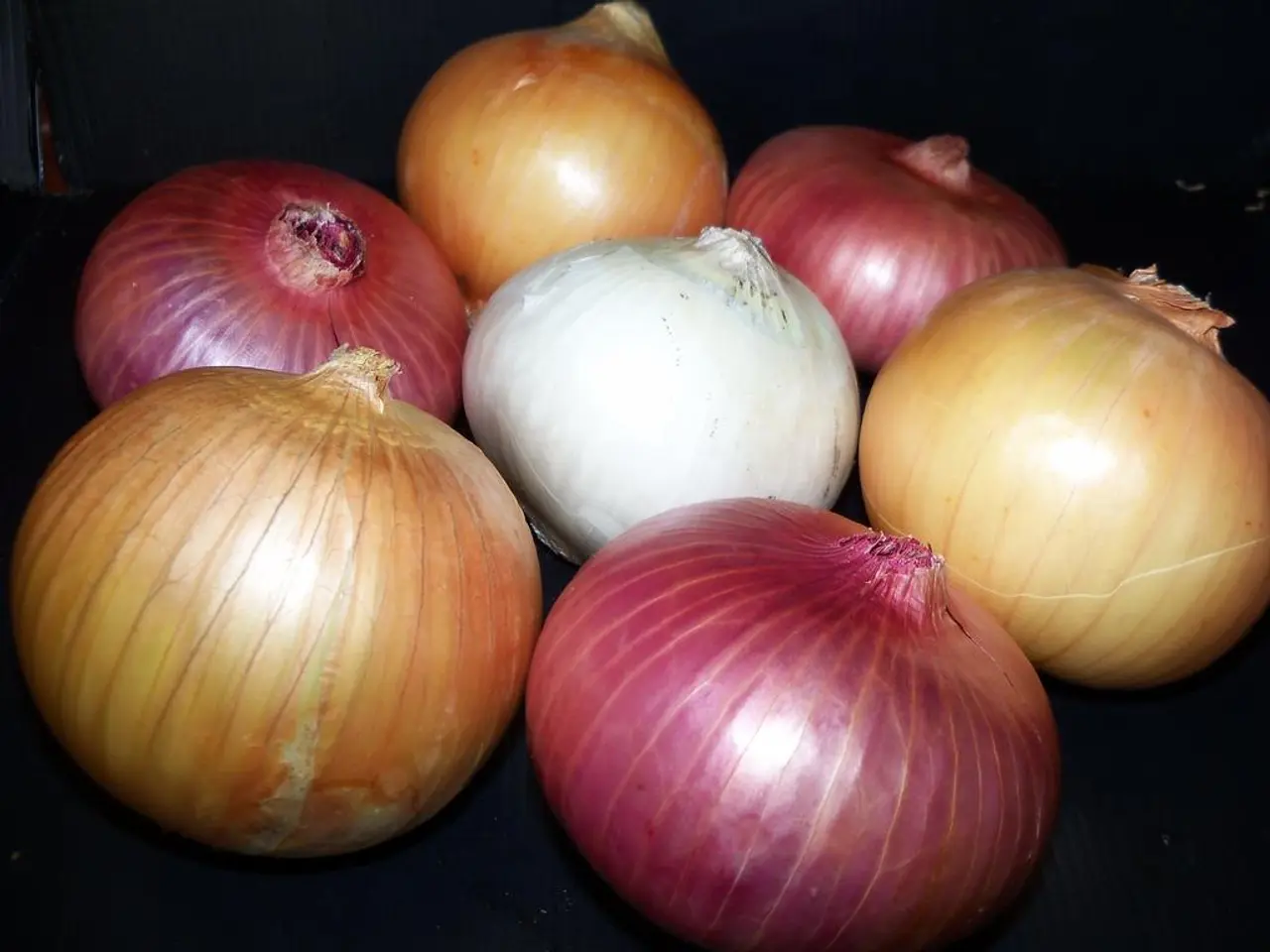Beginning to suppose that it's too late to begin planting? Surprisingly, it's the garlic planting season. Here's a guide to cultivating it.
Garlic, a versatile and essential ingredient in many cuisines, is not only a flavour powerhouse but also a nutritional powerhouse. With its long history of being used for fighting disease and infection, garlic is now known to help lower cholesterol levels and blood pressure. If you're interested in growing your own garlic for maximum flavor and health benefits, here are some key practices to follow.
Choosing the Right Garlic
Selecting the right garlic type and seed cloves is crucial. Hardneck garlic is ideal for colder climates, while softneck garlic thrives in milder conditions. Opt for the largest, healthiest cloves from certified seed garlic instead of grocery store bulbs, which may be treated against sprouting and less vigorous.
Preparing the Soil
Garlic grows best in loamy soil with a neutral pH and good drainage. Amend heavy clay or sandy soil with compost to improve fertility and structure.
Planting and Care
Plant cloves in the fall, about 4 weeks before the first expected frost, to allow root establishment without premature sprouting. Plant cloves pointy-end up, 2 inches deep, spaced 4-6 inches apart in rows 8-12 inches apart. Mulch heavily after planting to protect cloves overwinter and maintain soil moisture. Water regularly in spring and early summer, especially during dry spells, but avoid waterlogging.
For hardneck varieties, harvest garlic scapes (flower stalks) when they begin to curl. Removing scapes focuses the plant’s energy on bulb development, enhancing bulb size and flavor. Fertilize in spring with compost tea, fish emulsion, or balanced organic fertilizer to boost growth without excessive nitrogen that could reduce bulb quality.
Harvest and Cure
Harvest garlic when lower leaves brown but upper leaves remain green. Cure bulbs in a shaded, well-ventilated area for 2-3 weeks to develop flavor and improve storage life.
Additional Tips
Avoid planting in the same spot every year to minimize disease build-up. Consistent moderate watering, not too dry or wet, maintains flavorful, healthy garlic. Using organic garlic and fermenting it post-harvest can enhance beneficial compounds like allicin.
Unique Garlic Varieties
- 'Iberian Wight' is a large, white softneck with a crisp, fresh flavor, ready at the end of May, and has a white bulb streaked with mauve.
- 'Lautrec Wight' is a cultivar considered by many to be one of the most flavorsome, but it is not suitable for wet conditions.
- 'Elephant', a cultivar belonging to the species Alliumampeloprasum, has a warm, mild flavor and large heads that make for a spectacular feast when roasted whole.
- 'Germidour' is an early cropping garlic with rich purple heads and ivory cloves, and it requires regular checking for splitting pre-harvest.
- 'Thermidrôme' is a traditional cultivar producing large white heads and cloves, and it should be planted in October to November for a July harvest, but it should be used by Christmas after cropping.
- 'Red Duke', a hardneck, heritage garlic from Moravia in the Czech Republic, has plump purple cloves and a fierce, spicy flavor.
- 'Arno' is a new cultivar with the largest bulbs of any long-dormancy type, having a white head and pink cloves.
- 'Solent Wight' is a cultivar recommended by Colin Boswell for its flavor and long storage life, usually around nine months.
Growing Garlic in Containers
For those without a garden, it is possible to grow garlic in pots.
Where to Buy Garlic Seeds and Bulbs
The Garlic Farm, located at Mersley Lane, Newchurch, Isle of Wight PO36 0NR, stocks many of the cultivars mentioned.
Watering Garlic
The really critical months for watering garlic are in late spring.
Planting Pattern
Jojo plants her garlic cloves 20cm apart with the soil just covering the tip of the garlic, in rows 20cm apart, with alternate rows planted diagonally to create a herringbone pattern.
Enjoying Home-Grown Garlic
Home-grown garlic can be consumed at various stages, including the spring onion-like greens and the curly green stalk-like flower buds or 'scapes'. At harvest time, the baked heads of the 'wet' new garlic can be roasted whole and the dried crop eaten until Christmas and beyond. The sweet, subtle flavors of a home-grown garlic bulb can replace store-bought garlic.
- If you wish to grow garlic for maximum flavor and health benefits, consider choosing the right garlic type and seed cloves, such as hardneck garlic for colder climates and softneck garlic for milder conditions.
- For optimal garlic growth, plant the cloves in loamy soil with a neutral pH and good drainage, either in the fall or in containers, and space them 4-6 inches apart in rows 8-12 inches apart.
- In addition to gardening, home-grown garlic can be added to various food-and-drink recipes, or used in the home-and-garden lifestyle to flavour plants, repel pests, and encourage growth.
- By harvesting and curing garlic properly, you can extend its storage life and enjoy its sweet, subtle flavors until Christmas and beyond, replacing store-bought garlic with a more flavorful alternative.
- To find a variety of garlic seeds and bulbs, visit The Garlic Farm located on Mersley Lane, Newchurch, Isle of Wight PO36 0NR, which stocks many unique cultivars mentioned in this guide.




